Waking up with shoulder pain can be frustrating. Many people experience shoulder discomfort due to poor sleep posture or inadequate pillow and mattress support. Fortunately, incorporating specific stretches can help relieve shoulder pain and improve your overall comfort.
In this article, we’ll explore 11 stretches for shoulder pain [1] from sleeping, along with tips to prevent future discomfort and when to seek professional help.
How to Do the Exercises: Step-by-Step Guide
1. Pendulum Swing

- Begin in an upright standing position in front of a chair with your feet hip-width apart.
- Maintain good alignment with your head, shoulders, hips, and legs.
- Place one hand at the back of the chair and take a step backward to increase the angle of your body.
- Engage your core muscles.
- Hinge through your hips to bend your upper body forward with your opposite arm hanging on the side, then gently swing the arm from side to side with 10 repetitions.
- Relax and repeat the movement on the opposite side.
2. Child’s Pose

- For this stretches for shoulder pain from sleeping, begin in an upright kneeling position on the floor with your knees closed together, maintaining good alignment with your upper body.
- Tighten your abdominal area, shift your hips back to your feet, and extend your arms straight in front of you, or place them by your sides for a gentler stretch.
- Lower your forehead to the floor, relaxing your mid-back area for a light stretch.
- Hold this position for several deep belly breaths, in through your nose and out through your mouth.
3. Shoulder Rolls
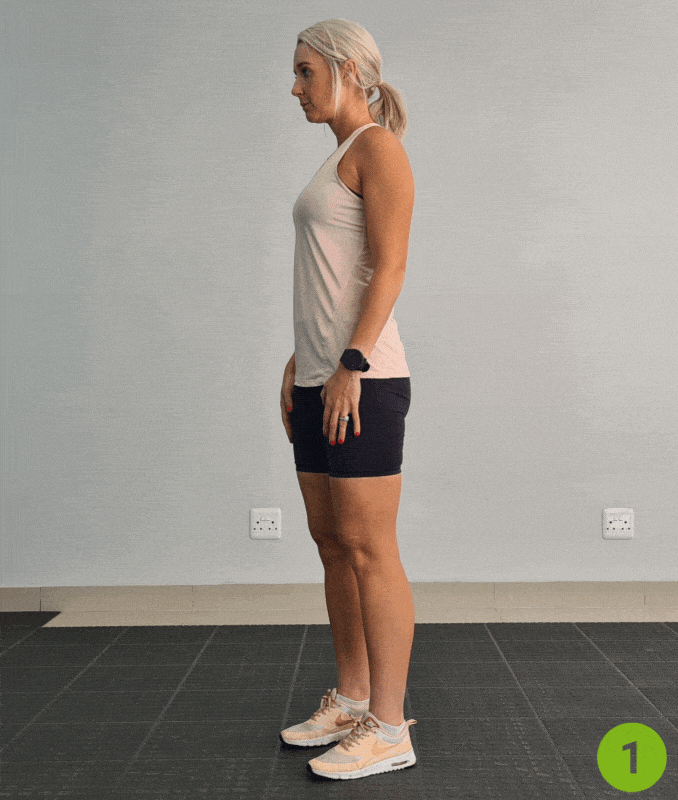
- Begin in an upright standing position with your feet shoulder-width apart, maintaining good alignment with your head, shoulders, hips, and legs.
- Place your hands on your side.
- Engage your core.
- Shift your shoulders upward, then roll them up and back until you feel resistance in your shoulder blades.
- Relax and repeat the movement in the opposite direction.
- Complete 10 repetitions.
4. Door Frame Stretch
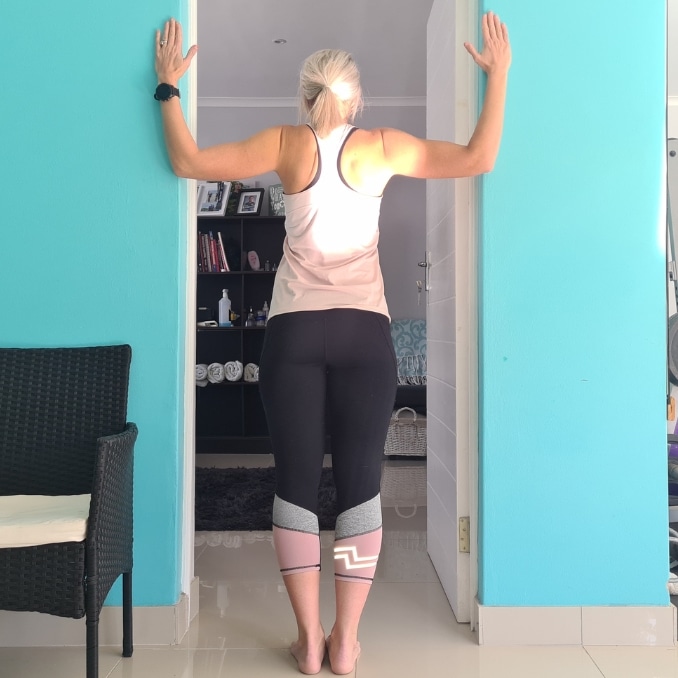
- Begin in an upright standing position in a doorway with your feet hip-width apart. Maintain good alignment with your head, shoulders, hips, and legs.
- Place your forearms on the door frame with your elbows bent at a 90-degree angle.
- Engage your core muscles.
- Gently lean forward, squeezing your shoulder blades together.
- Hold the position for several deep belly breaths, in through your nose and out through your mouth.
5. Cross-Body Arm Stretch

- For this stretches for shoulder pain from sleeping, begin in an upright standing position with your feet shoulder-width apart.
- Maintain good alignment with your head, shoulders, hips, and legs.
- Engage your core muscles.
- Bring your right arm across your body at shoulder height and use your left hand to gently pull your right arm towards your chest while keeping your hips straight.
- Hold the position for 30 seconds.
- Relax and repeat the movement on the opposite side.
6. Shoulder Blade Squeeze
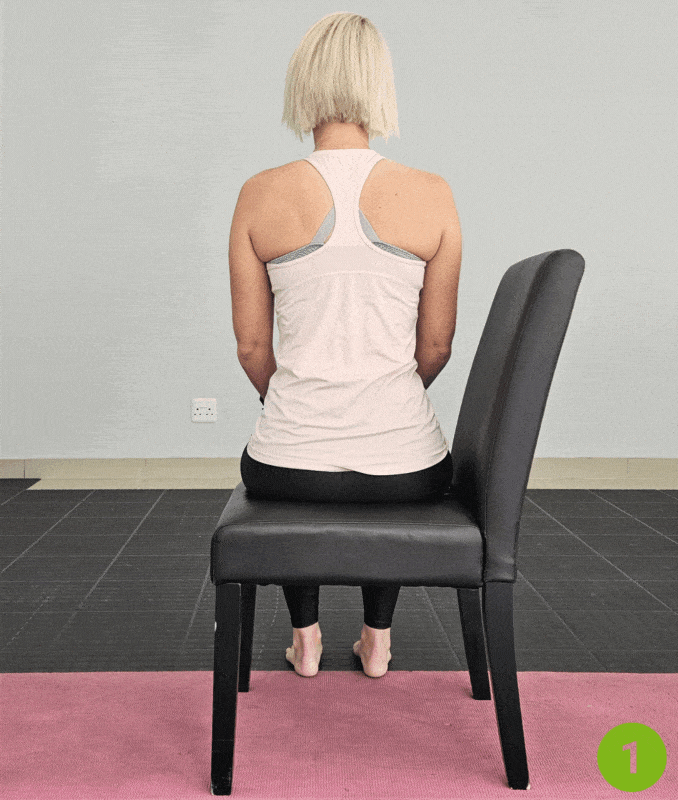
- Begin in an upright sitting position on a chair with your knees bent and feet flat on the floor.
- Place your hand on your lap.
- Engage your core muscles.
- Squeeze your shoulder blades together and hold for 5–10 seconds.
- Repeat 10 times.
7. Figure 8 Stretch

- Reach your right arm overhead and bend the elbow so your hand drops between your shoulder blades.
- Reach your left arm behind your back and try to clasp the fingers of both hands.
- If you can’t reach, use a towel between your hands.
- Hold for 20–30 seconds, then switch sides.
8. Upper Back Stretch
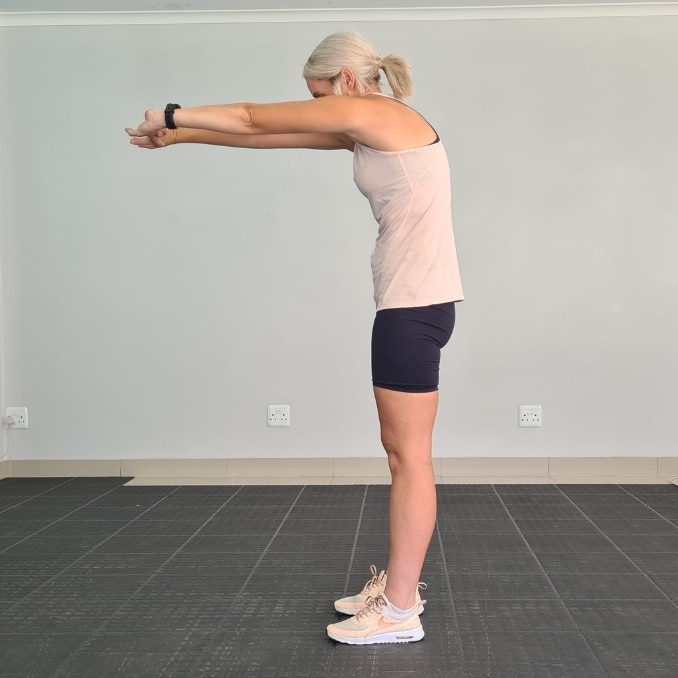
- Begin in an upright standing position with your feet hip-width apart.
- Maintain good alignment with your head, shoulders, hips, and legs.
- Extend your arms and interlace your fingers in front of you at shoulder height.
- Engage your core muscles. Round your upper back and push your hands away from your body.
- Hold the position for several deep belly breaths, in through your nose and out through your mouth.
9. T-Pose Stretch

- Begin in an upright standing position with your feet hip-width apart.
- Maintain good alignment with your head, shoulders, hips, and legs.
- Engage your core muscles.
- Straighten your arms at your sides at shoulder height.
- Hold the position for several deep belly breaths, in through your nose and out through your mouth.
10. Wall Angels

- For this stretches for shoulder pain from sleeping, begin in an upright standing position with your back against the wall with your feet hip-width apart, maintaining good alignment with your head, shoulders, hips, and legs.
- Move your feet about 6–12 inches away from the wall to increase the angle of your body.
- Engage your core.
- Raise your arms, bending your elbows until your hands are just above your shoulders to form a “W” shape with the backs of your hands against the wall, then slowly slide your arms up, forming a “V” shape.
- Keep your shoulders up and back and your lower back pressed against the wall.
- Slide your arms back down to the starting position and repeat the movement for 10-15 repetitions for 2–3 sets, resting for 30 seconds between sets.
11. Neck Stretch
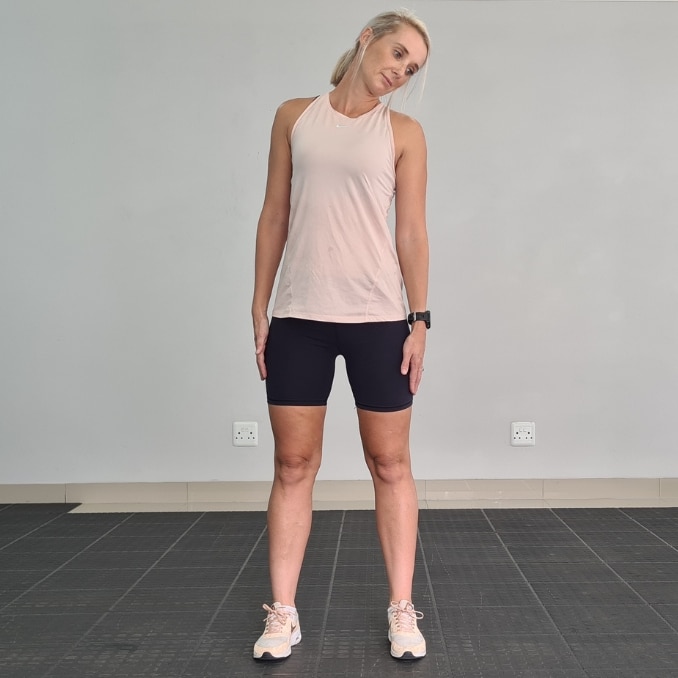
- Begin in an upright standing position with your feet hip-width apart.
- Maintain good alignment with your head, shoulders, hips, and legs.
- Place your hands at your side.
- Engage your core muscles.
- Gently tilt your head to the left, bringing your left ear toward your left shoulder.
- Keep your shoulders relaxed.
- Hold for 20 seconds, then switch sides.
Causes of Pain From Sleeping on the Side
Sleeping on your side can sometimes lead to shoulder pain due to several factors:
- Poor Sleep Position: If your sleep posture places your shoulder in an awkward or compressed position, it can strain the muscles and tendons.
- Inadequate Pillow Support: A pillow that is too high or too low can cause your shoulder blades to be misaligned.
- Underlying Conditions: Conditions like rotator cuff injuries, shoulder bursitis [2], or frozen shoulder can be exacerbated by poor sleeping posture.
Tips to Prevent Shoulder Pain at Night
To avoid experiencing shoulder pain [3] from sleeping, consider these tips:
- Invest in a Good Pillow: Ensure your pillow supports your neck and keeps your spine aligned.
- Practice Good Posture: Maintain a neutral position during sleep. Avoid sleeping with your arms straight overhead or bent awkwardly.
- Strengthening Exercises: Engage in regular exercises to strengthen your shoulder muscles, which can help alleviate stress on the joint.
- Use a Heating Pad: Applying a heating pad before bed can relax tight muscles.
When to See a Doctor or Physical Therapist
If you’re experiencing persistent or severe pain, it’s essential to seek treatment from a doctor or physical therapist. Signs that you should visit a professional include:
- Pain that doesn’t improve with rest or stretches.
- Limited range of motion in your shoulder.
- Visible growths or deformities in the shoulder area.
- Popping noises or severe pain during movement.
Conclusion
Dr. James Choi, a board-certified orthopedic surgeon specializing in shoulder injuries, emphasizes the importance of gentle stretching to alleviate shoulder pain caused by poor sleep posture. He states:
“Engaging in gentle stretches, such as the doorway stretch or pendulum swing, can significantly improve flexibility and reduce tension in the shoulder muscles. These stretches help to realign the shoulder joint and improve blood circulation, which is crucial for recovery. It’s essential to listen to your body and avoid over stretching, as this can lead to further discomfort.”
This highlights the need for mindful practice and the benefits of targeted stretches to relieve shoulder discomfort from sleeping.
In conclusion, incorporating these gentle stretches into your daily routine can significantly relieve shoulder pain and enhance your overall well-being.
By understanding the causes of shoulder discomfort and taking proactive steps, you can enjoy more restful nights and healthier shoulders. Don’t let shoulder pain dictate your life—start stretching today!
If you want to learn how to eliminate your shoulder discomfort permanently, check out this Shoulder Pain Solved Program!
Frequently Asked Questions
Should I stretch my shoulder if it hurts?
It depends on the cause. Gentle stretching may help, but avoid aggressive movements that worsen the pain.
How can I quickly fix my shoulder pain?
Rest, apply ice, and take over-the-counter pain relievers (like ibuprofen) for quick relief.
What is the best pain relief for shoulder pain?
Over-the-counter NSAIDs (like ibuprofen or naproxen) and applying heat or ice can be effective.
What is a red flag for shoulder pain?
Severe pain, sudden weakness, or inability to move the shoulder may indicate a serious condition and require immediate medical attention.
What is the first line of treatment for shoulder pain?
Rest, ice application, and NSAIDs are typically the first line of treatment.


